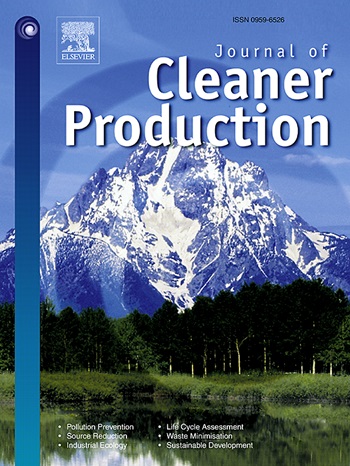Improving wear resistance of epoxy resin using bio-oil from hemp biomass: a sound strategy to reduce environmental impact
IF 9.7
1区 环境科学与生态学
Q1 ENGINEERING, ENVIRONMENTAL
引用次数: 0
Abstract
Efforts are underway to convert biomass into valuable bio-based chemicals, fostering reduced dependence on fossil fuels and advancing sustainability. In this work, various amounts of hemp bio-oil were used to partially replace the amine-based curing agent in a commercial epoxy resin designed for the building sector. All the so-formulated epoxy systems showed a complete degree of curing. The values of crosslinking density decreased to 30% at the highest bio-oil concentration and it was hypothesized that some components of bio-oil reacted with epoxy units acting as dangling groups to resin. These features significantly affected the mechanical properties of the bio-resins: by increasing the amount of bio-oil, the Martens hardness and the indentation Young’s modulus decreased (by 20 and 37%, respectively when the bio-oil was half the amount of the amine-based curing agent), while the damping ability of the bio-resin increased. For the commercial resin, the wear track showed an average depth of 86 ± 15 μm and a specific wear rate of 3.62×10-4 mm3/N·m. These values decreased by 59 and 89%, respectively, when the bio-oil used was half the amount of the amine-based curing agent. The results of the life cycle assessment, including the hemp hurd separation from fibers in the system boundaries, appeared only slightly favorable for the bio-based solutions. However, when also considering the technical life (i.e., wear resistance) of the resins, a significant reduction of all impacts was observed, achieving more than 80% when bio-oil was half the amount of the amine-based curing agent.求助全文
约1分钟内获得全文
求助全文
来源期刊

Journal of Cleaner Production
环境科学-工程:环境
CiteScore
20.40
自引率
9.00%
发文量
4720
审稿时长
111 days
期刊介绍:
The Journal of Cleaner Production is an international, transdisciplinary journal that addresses and discusses theoretical and practical Cleaner Production, Environmental, and Sustainability issues. It aims to help societies become more sustainable by focusing on the concept of 'Cleaner Production', which aims at preventing waste production and increasing efficiencies in energy, water, resources, and human capital use. The journal serves as a platform for corporations, governments, education institutions, regions, and societies to engage in discussions and research related to Cleaner Production, environmental, and sustainability practices.
 求助内容:
求助内容: 应助结果提醒方式:
应助结果提醒方式:


